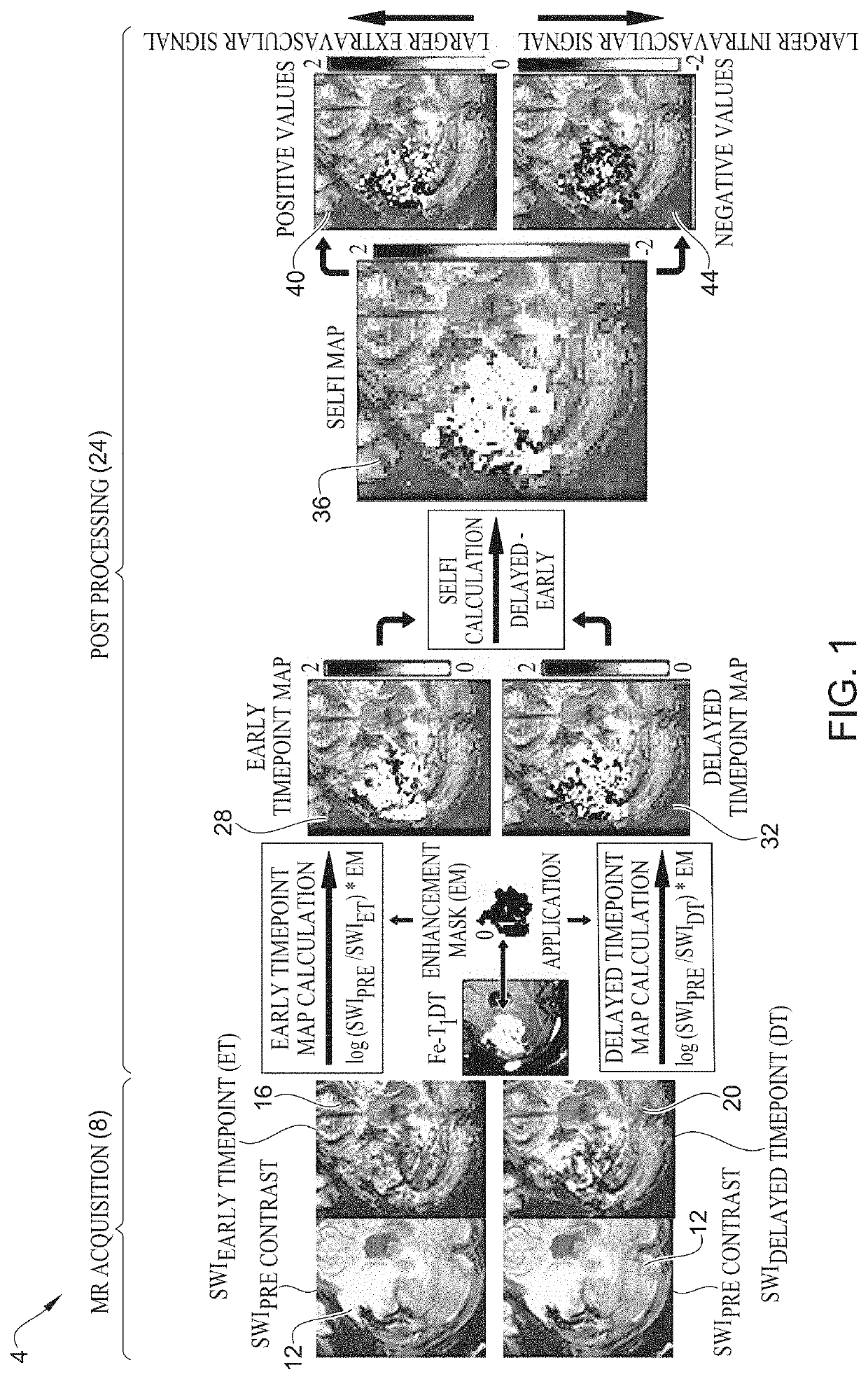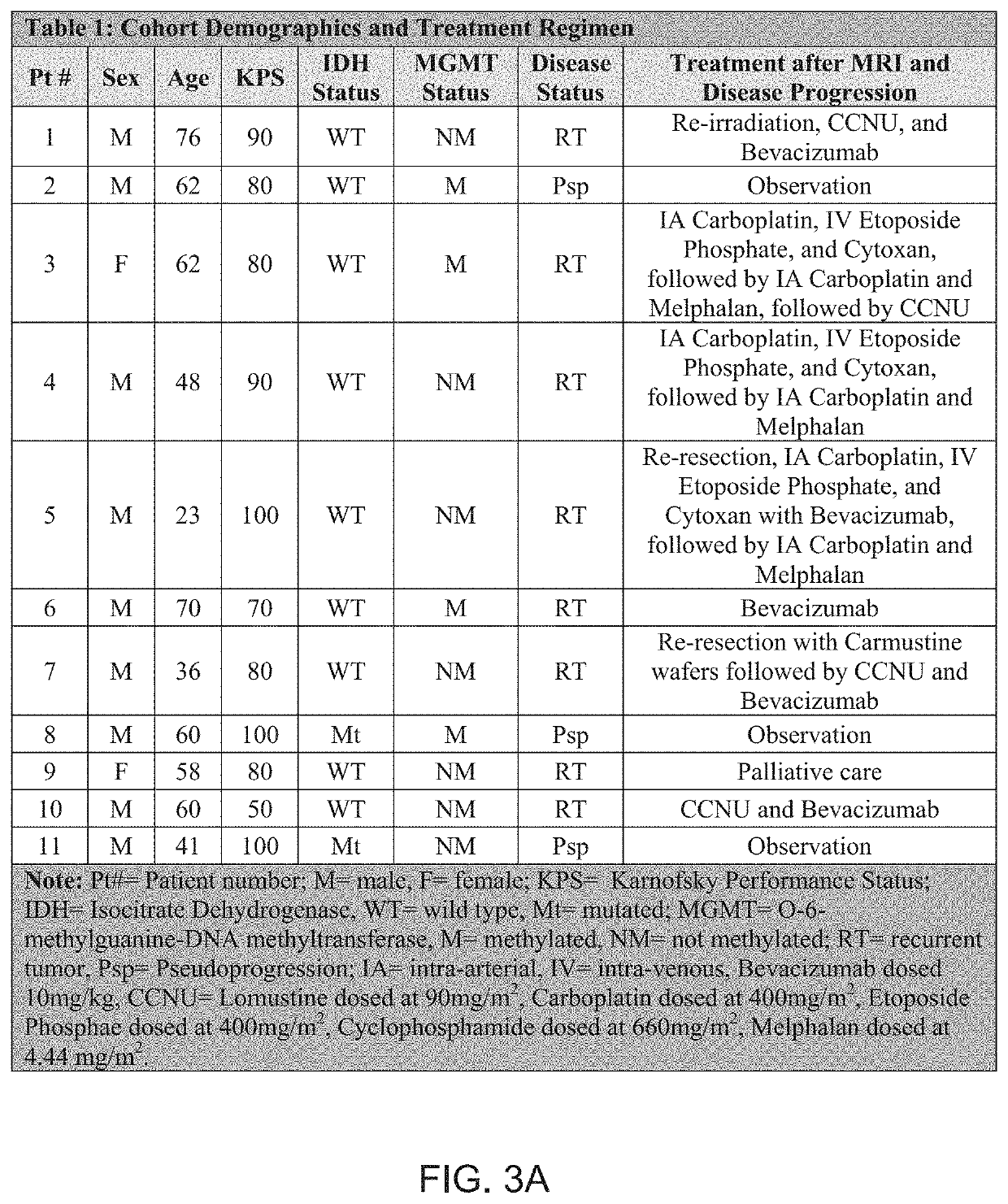Distinguishing between extravascular and intravascular contrast pools
- Summary
- Abstract
- Description
- Claims
- Application Information
AI Technical Summary
Benefits of technology
Problems solved by technology
Method used
Image
Examples
example experimentation
[0044]As shown in table 1 of FIGS. 3A and 3B, twenty-three patients with glioblastoma progression following Stupp protocol chemoradiotherapy were tested in an experiment. All patients underwent ferumoxytol-enhanced susceptibility weighted imaging (SWI) magnetic resonance imaging, in addition to standard T1-weighted sequences. Imaging was performed prior to, immediately after (early timepoint), and 24-hours after (delayed timepoint) intravenous ferumoxytol administration. SELFI maps were generated as the voxel-wise difference of the 24-hour delayed timepoint map from the early timepoint map. Prespecified end points included negative and positive portions of SELFI maps. Pearson's r- and Student's t-tests were performed. In terms of survival analysis, overall survival was classified in IDH wild type glioblastoma from the date of surgical diagnosis until death or last follow-up date for patients without an event. Survival analysis was performed by using multivariate Cox regression analy...
PUM
 Login to View More
Login to View More Abstract
Description
Claims
Application Information
 Login to View More
Login to View More - R&D
- Intellectual Property
- Life Sciences
- Materials
- Tech Scout
- Unparalleled Data Quality
- Higher Quality Content
- 60% Fewer Hallucinations
Browse by: Latest US Patents, China's latest patents, Technical Efficacy Thesaurus, Application Domain, Technology Topic, Popular Technical Reports.
© 2025 PatSnap. All rights reserved.Legal|Privacy policy|Modern Slavery Act Transparency Statement|Sitemap|About US| Contact US: help@patsnap.com



